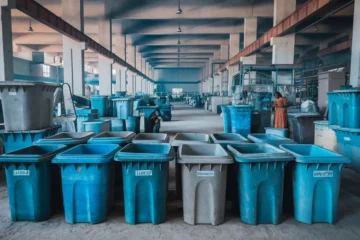Child-Resistant & Tamper-Proof: Essential Considerations for Vape Packaging Compliance

Vaping has become an increasingly popular alternative to traditional smoking, especially among younger demographics. However, with its rise in popularity comes the need for strict regulations and safety measures, particularly concerning the packaging of vape products. Child-resistant and tamper-proof packaging are essential considerations for vape manufacturers to ensure the safety of consumers, especially minors, and to comply with regulatory standards. In this article, we delve into the significance of child-resistant and tamper-proof packaging in the vaping industry, exploring its importance, regulatory requirements, and best practices.
Understanding the Landscape: Regulations and Challenges
Child-resistant packaging, crucial for preventing accidental access to harmful substances by children, has become even more imperative with the proliferation of vaping. Vape liquids, often containing nicotine, pose grave health risks if ingested, particularly by children. That’s why secure vape cartridge boxes are essential to safeguard against such incidents.
Tamper-proof packaging, on the other hand, aims to protect consumers by ensuring the integrity of the product. Tamper-proof seals provide consumers with the assurance that the product has not been tampered with or contaminated before purchase, thus enhancing trust and safety.
Regulatory Requirements
Regulatory bodies around the world have recognized the importance of child-resistant and tamper-proof packaging in the vaping industry and have implemented stringent requirements to ensure compliance. For example, in the United States, the Consumer Product Safety Commission (CPSC) regulates child-resistant packaging standards under the Poison Prevention Packaging Act (PPPA). Similarly, the Food and Drug Administration (FDA) regulates vape products under the Family Smoking Prevention and Tobacco Control Act (TCA), which includes requirements for child-resistant packaging.
In Europe, the Tobacco Products Directive (TPD) sets out specific regulations for vape products, including packaging requirements to ensure child safety. These regulations aim to standardize packaging across the EU member states and reduce the risk of accidental ingestion by children.
Best Practices for Compliance
To comply with regulatory requirements and ensure the safety of consumers, vape manufacturers must implement best practices for child-resistant and tamper-proof packaging. Here are some essential considerations:
1. Design and Testing
Packaging design plays a crucial role in ensuring child resistance and tamper-proofing. Manufacturers should invest in designing packaging that is difficult for children to open but easy for adults to access. This often involves the use of special closures, such as push-and-turn caps or blister packs, that require a combination of dexterity and strength to open.
Testing is also essential to ensure that packaging meets regulatory standards for child resistance. Manufacturers should conduct rigorous testing using standardized protocols to assess the effectiveness of their packaging designs in preventing access by children.
2. Clear Labeling
Clear and prominent labeling is essential to communicate important safety information to consumers. Packaging should include warnings about the dangers of nicotine ingestion, instructions for safe storage, and information about how to reseal tamper-proof packaging. Additionally, packaging should feature recognizable symbols, such as the Child-Resistant Packaging symbol, to indicate compliance with safety standards.
3. Education and Awareness
In addition to implementing robust packaging solutions, education and awareness campaigns can help prevent accidents and promote responsible use of vape products. Manufacturers should provide resources and information to retailers and consumers about the importance of child-resistant packaging and safe storage practices. This may include online resources, instructional videos, and in-store signage.
4. Collaboration with Regulatory Bodies
Collaboration with regulatory bodies is crucial for staying informed about evolving requirements and ensuring compliance with existing regulations. Manufacturers should actively engage with regulatory agencies to stay abreast of changes in standards and guidelines and seek guidance on best practices for packaging compliance.
Conclusion
Child-resistant and tamper-proof packaging are essential considerations for vape manufacturers to ensure the safety of consumers, particularly minors, and to comply with regulatory standards. By investing in robust packaging designs, clear labeling, education, and collaboration with regulatory bodies, manufacturers can enhance the safety and integrity of vape products and protect public health. Ultimately, prioritizing safety in packaging is not only a legal requirement but also a moral obligation to protect vulnerable populations and promote responsible use of vape products.
Leave a reply
You must be logged in to post a comment.












